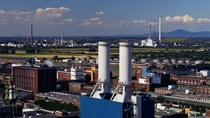Who we are
Balance study for climate protection
Climate protection is a global task – and not a new one. In order to effectively plan activities in this area, a meaningful data pool is required. BASF was the first company in the world to publish a comprehensive corporate carbon footprint in 2008.
To do so, BASF analyzed its greenhouse gas emissions throughout the entire value chain. It not only considered the emissions at its own sites, but also the provision and manufacturing of raw materials and intermediates, as well as the disposal of all products at the end of their life cycles. BASF compared these to the emissions which were avoided through the use of its climate protection products.
The outcome: BASF products and procedures saved three times more greenhouse gas emissions than were emitted during raw material procurement, manufacturing and disposal for all BASF products. 3:1 to climate protection!
A further component of the CO2 balance was the evaluation of saved emissions through the use of BASF climate protection products at their customers. The climate protection products back then included lightweight plastics, catalysts and fuel additives, or new insulation materials that supported BASF customers from the automotive and construction sectors in reducing the CO2 emissions and energy consumption of their products.
BASF also ensures that its plants and processes are energy efficient, and therefore protect the environment. Important components of the energy efficiency concept at BASF were, and still are, the Verbund and using cogeneration for energy generation. As part of the Verbund system, the energy Verbund reduces CO2 emissions by converting waste heat from a production plant into steam and making it available as energy via the BASF steam network. The waste heat generated by the gas and steam turbine power plants, which have been in operation since 1997, is also used to produce steam and made available to the other plants at the site.
For example, the Ludwigshafen Verbund site has the following figures: In 2008, 1.5 million metric tons of CO2 were saved by the energy Verbund alone. Another 500,000 metric tons of CO2 emissions were saved by the cogeneration power plant. In comparison, in 2018 BASF was able to prevent a total of 6.3 million metric tons of CO2 through the combination of electricity and steam generation in the energy Verbund which is constantly being developed further.


